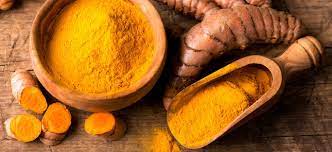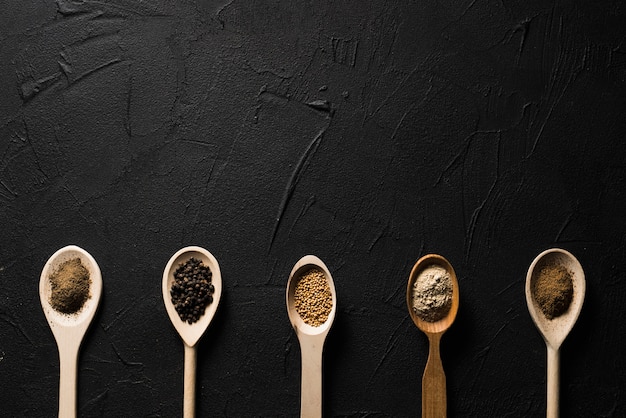Anchovy vs Sardine – Which Fish is the Better Choice for Your Health?
When it comes to seafood, anchovies and sardines are two of the most popular options available. These small fish are not only delicious but also packed with essential nutrients. However, many people find it hard to differentiate between anchovies and sardines due to their similar appearance and taste. In this comprehensive comparison, we will explore the key differences and similarities between anchovies and sardines, helping you make an informed decision about which fish to include in your diet.
Appearance: One of the major differences between anchovies and sardines lies in their physical appearance. Anchovies are typically smaller in size, measuring around 2 to 4 inches in length. They have a slender body with a silver-green color and a distinct stripe running along their sides. On the other hand, sardines are larger, ranging from 4 to 6 inches in length. They have a plump and elongated body with a silvery hue and a row of dark spots along their sides.
Taste and Texture: When it comes to taste and texture, anchovies and sardines also have some contrasting characteristics. Anchovies have a strong, intense flavor with a pronounced saltiness. They are often described as having a umami taste, which is rich and savory. Sardines, on the other hand, have a milder taste with a hint of sweetness. They are less salty and have a softer, oilier texture compared to anchovies.
Nutritional Profile: Both anchovies and sardines are highly nutritious and offer a wide range of health benefits. They are both excellent sources of omega-3 fatty acids, which are essential for heart health and brain function. However, anchovies tend to contain a higher concentration of omega-3 fatty acids compared to sardines. Additionally, anchovies are also rich in calcium, iron, and vitamin D, while sardines are packed with vitamin B12 and selenium. Both fish are low in calories and high in protein, making them a great choice for individuals looking to maintain a healthy diet.
In conclusion, while anchovies and sardines may share some similarities, such as being small fish with high nutritional value, they also have distinct differences in terms of appearance, taste, and texture. Ultimately, the choice between anchovies and sardines depends on personal preference and dietary needs. So, whether you prefer the strong, salty flavor of anchovies or the milder, sweeter taste of sardines, both fish can be enjoyed as part of a balanced and nutritious diet.
Taste and Texture
When it comes to taste and texture, anchovies and sardines offer distinct experiences for the palate.
Anchovies have a strong, salty flavor that is often described as intensely savory. Their taste can be overpowering for some people, but for others, it is a beloved flavor that adds depth and complexity to a dish. The texture of anchovies is typically soft and oily, with a slightly chewy consistency.
Sardines, on the other hand, have a milder and more delicate flavor compared to anchovies. They still have a subtle fishiness, but it is not as overpowering. Sardines have a tender texture and are often described as being “meatier” than anchovies. They have a flaky and moist consistency, making them enjoyable to eat.
Both anchovies and sardines can be enjoyed in various ways. Anchovies are commonly used in cooking as a flavor enhancer in sauces, dressings, and condiments. They can also be enjoyed on their own as a snack. Sardines are often eaten grilled or canned, and they can be added to salads, pasta dishes, or enjoyed straight from the tin.
Overall, the taste and texture of anchovies and sardines offer different experiences. Whether you prefer the bold and intense flavor of anchovies or the milder taste and meaty texture of sardines, both fish provide a unique and flavorful addition to any meal.
Nutritional Value
Both anchovies and sardines are small fish that are packed with essential nutrients. They are not only delicious but also offer numerous health benefits. Here is a comparison of their nutritional value:
Protein
Anchovies and sardines are excellent sources of protein. Protein is essential for the growth and repair of tissues, as well as the production of enzymes and hormones in the body. A serving of anchovies provides around 9 grams of protein, while a serving of sardines offers approximately 21 grams of protein.
Omega-3 Fatty Acids
Both anchovies and sardines are rich in omega-3 fatty acids, which are beneficial for heart health and brain function. These fatty acids help reduce inflammation, lower blood pressure, and improve cholesterol levels. Sardines have higher levels of omega-3 fatty acids compared to anchovies.
Vitamins and Minerals
Anchovies and sardines are both excellent sources of vitamins and minerals. They are packed with important nutrients such as calcium, iron, magnesium, phosphorus, potassium, and zinc. These fish also contain vitamins B12, D, and E, which are essential for overall health and well-being.
It’s worth noting that both anchovies and sardines are low in calories and carbohydrates, making them a healthy choice for weight management and maintaining blood sugar levels.
In conclusion, both anchovies and sardines are nutritious and offer a wide range of health benefits. Whether you choose anchovies or sardines, incorporating these fish into your diet can provide you with an abundance of essential nutrients.
Culinary Uses
Both anchovies and sardines are popular ingredients in various cuisines around the world. They add a rich and savory flavor to many dishes. Here are some of the culinary uses of each fish:
Anchovies:
- As a topping for pizzas and flatbreads
- Mixed into pasta sauces and dressings
- In tapenades and spreads
- Added to fish stocks and broths to enhance flavor
- In Caesar salad dressings
- As an ingredient in Worcestershire sauce
- Used to flavor rice and risotto dishes
Sardines:
- Grilled or roasted as a main dish
- Added to salads or sandwiches
- Canned for convenient and long-lasting storage
- Used in pasta dishes, such as pasta con le sarde
- In fish stews and soups
- As a topping for bruschetta
- Mixed into omelettes or frittatas
Both anchovies and sardines can be an acquired taste due to their strong flavors, but they can also elevate the taste of many dishes when used correctly.
Sustainability and Environmental Impact
When it comes to sustainability and environmental impact, both anchovies and sardines are considered to be good choices.
Both anchovies and sardines are small fish that reproduce quickly and have a high abundance in the ocean. This means that their populations can withstand fishing pressures without being depleted. Additionally, anchovies and sardines are often caught using sustainable fishing methods, such as purse seining, which minimizes bycatch and habitat destruction.
Furthermore, anchovies and sardines are low on the food chain, meaning they have a smaller carbon footprint compared to larger predatory fish. They require fewer resources to grow and produce, making them an environmentally-friendly choice.
Both anchovies and sardines are also rich in omega-3 fatty acids, vitamins, and minerals, making them a nutritious and sustainable option for human consumption.
Anchovy Sustainability
Anchovies are known for their resilience and adaptability. They have a short lifespan and reproduce rapidly, allowing their populations to replenish quickly. In addition, anchovies are often found in large schools, which makes them easier to catch using selective fishing techniques. This reduces the risk of overfishing and helps maintain their sustainability.
Sardine Sustainability
Like anchovies, sardines also have a high reproductive rate and are abundant in the ocean. They are known for their schooling behavior, which makes them less vulnerable to predation and easier to catch in large numbers. The use of sustainable fishing methods helps to ensure the long-term sustainability of sardine populations.
Overall, both anchovies and sardines are sustainable choices that have a minimal environmental impact. Including them in your diet can contribute to a healthier planet and a more sustainable food system.
Availability and Price
When it comes to availability and price, both anchovies and sardines are widely accessible and relatively affordable options.
Anchovies
Anchovies are commonly found in both fresh and canned forms. Fresh anchovies can be found in seafood markets, especially in coastal regions. They are often sold whole or filleted. Canned anchovies, on the other hand, are readily available in most grocery stores and can be easily found in the seafood aisle.
As for the price, fresh anchovies can be more expensive, as they are considered a gourmet delicacy. However, canned anchovies are usually more affordable and can be a budget-friendly option, making them accessible to a wider range of people.
Sardines
Sardines are also available in both fresh and canned forms. Fresh sardines can be found in seafood markets, supermarkets, and fishmongers. However, they are not as easily found as anchovies. Canned sardines, on the other hand, are widely available and can be found in most grocery stores and supermarkets, making them a more convenient option for many consumers.
In terms of price, sardines are generally more affordable than anchovies, especially when it comes to canned sardines. This makes them a popular choice for those on a budget or looking for an economical seafood option.
Overall, both anchovies and sardines are widely available and can be easily obtained in canned form. While fresh anchovies may be pricier, canned anchovies and sardines are both budget-friendly options for those looking to incorporate them into their diet.
Health Benefits
Both anchovies and sardines offer numerous health benefits due to their high nutritional value. These small fish are packed with essential nutrients that promote overall well-being and support various bodily functions.
Rich in Omega-3 Fatty Acids
Both anchovies and sardines are known for their high omega-3 fatty acid content. These healthy fats are essential for the proper functioning of the body and have numerous benefits, including reducing inflammation, supporting heart health, and improving brain function.
Excellent Source of Protein
Anchovies and sardines are both excellent sources of protein. Protein is essential for building and repairing tissues, supporting muscle growth, and maintaining a healthy immune system. Adding these fish to your diet can help meet your daily protein requirements in a nutritious way.
In addition to omega-3 fatty acids and protein, anchovies and sardines contain an array of beneficial nutrients, including vitamins, minerals, and antioxidants. These nutrients contribute to the health benefits associated with consuming these fish.
- Vitamins: Both fish are rich in vitamins such as vitamin D, vitamin B12, and vitamin A. These vitamins play important roles in bone health, immune function, and vision, among other functions.
- Minerals: Anchovies and sardines are good sources of minerals like calcium, phosphorus, and selenium. These minerals are important for bone health, energy production, and antioxidant defense.
- Antioxidants: These fish contain antioxidants like selenium and omega-3 fatty acids, which help protect cells from damage caused by harmful molecules called free radicals. Antioxidants are known to have numerous health benefits, including reducing the risk of chronic diseases.
Overall, adding anchovies and sardines to your diet can provide a wide range of health benefits, from promoting heart health to supporting brain function. These fish are not only delicious but also highly nutritious, making them an excellent choice for a healthy diet.
“FAQ:” Anchovy vs sardine
What are the differences between sardines and anchovies in terms of species?
Different species.
What does the “cure” process involve in the context of fish canning?
It is the process of preserving fish using salt or other substances to enhance flavor and extend shelf life.
What are the characteristics of the fish harvest intended for canning?
Fish harvest is collected for the purpose of using it in the canning process, usually in the form of canned fish.
Why are anchovies often associated with a fishy smell?
Anchovies have a distinctive fishy smell that often lingers after their use in culinary preparations.
What is the difference between “anchovy filets” and “anchovy fillets”?
These terms are used in culinary contexts in different regions, but both refer to anchovy fillets that can be used in cooking.
What distinguishes white anchovies from regular canned or jarred anchovies?
White anchovies are smaller fish, often sold jarred in olive oil, and have a milder flavor compared to salt-cured anchovies.
How do sardines and anchovies differ in terms of size and curing process?
Sardines are both small fish, but anchovies are smaller, and they are typically cured in salt to achieve their distinctive taste.
Can you explain the flavor profiles of white anchovies and how they compare to other canned fish like sardines?
White anchovies offer a milder, less fishy flavor compared to sardines, making them a popular choice for those who enjoy a subtle taste.
What’s the difference between sardines and anchovies when it comes to their omega-3 content?
Both sardines and anchovies provide omega-3 fats, but anchovies pack high levels of these beneficial fats.
How are anchovies often confused with another type of cured fish, especially when sold canned or jarred?
Boquerones, or white anchovies, are often confused with regular canned or jarred anchovies due to their similar appearance.
Can you elaborate on the omega-3 content in white anchovies and how it contributes to their nutritional value?
White anchovies, like regular anchovies, provide high levels of omega-3 fats, offering health benefits such as supporting heart health.
In what ways can sardines and anchovies be used interchangeably in recipes, considering their distinct flavors?
Sardines and anchovies can be used interchangeably in recipes like bagna cauda, adding a rich and umami flavor to the dish.
How do white anchovies, often packed in olive oil, differ from sardines in terms of their sodium content?
White anchovies packed in olive oil generally have lower sodium content compared to sardines, making them a suitable option for those watching their salt intake.
What role do well-managed fisheries play in ensuring the sustainability of anchovies and sardines?
Well-managed fisheries are crucial for maintaining the populations of anchovies and sardines, ensuring their availability and preventing overfishing.
How do the flavor profiles of mackerel, pilchard, and other fatty fish compare to those of anchovies and sardines?
Mackerel, pilchard, and other fatty fish offer distinct flavor profiles, with some being more pungent or briny compared to the taste of anchovies and sardines.
How do little fish, specifically anchovies, compare in size to sardines?
Anchovies are smaller than sardines, making them a petite option in the world of little fish.
What makes anchovies great, and how are they commonly utilized in cooking?
Anchovies are great for adding a savory and umami depth to dishes. Many chefs use anchovies to enhance flavors in various recipes.
How are sardines and anchovies distinct when it comes to being canned whole in olive oil?
While both can be canned whole in olive oil, anchovies generally have a stronger flavor profile compared to sardines.
What nutritional benefits, particularly in terms of omega-3s, are associated with consuming little fish like anchovies and sardines?
Little fish, such as anchovies and sardines, are rich in omega-3 fatty acids, offering health benefits for heart and brain health.
In what ways do sardines differ from anchovies, especially considering their taste and levels of toxic heavy metals?
Sardines aren’t as strong-tasting as anchovies, and they typically have lower levels of toxic heavy metals, making them a delicious and healthier option.






